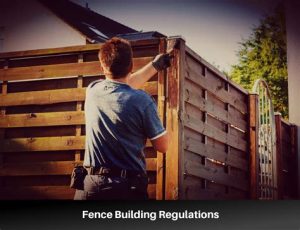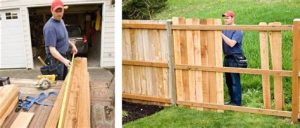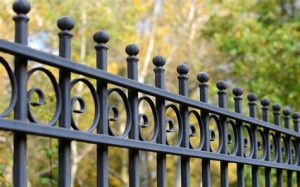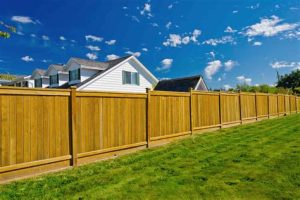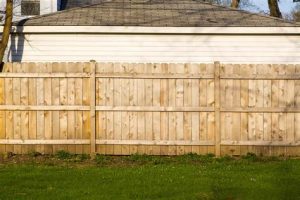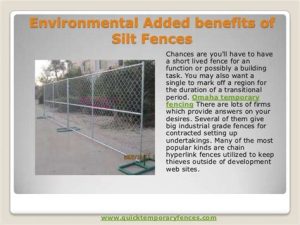Discover cost-effective DIY fence installation with our guide on materials, step-by-step process, challenges, and a comparison with professional installation costs.Installing your own fence can be an appealing project for homeowners looking to enhance their property’s privacy and aesthetics while saving money. However, before diving in, it’s essential to understand the financial and practical implications involved in a DIY fence installation. In this blog post, we’ll break down the various costs associated with purchasing materials, provide a detailed step-by-step guide for the installation process, and highlight common challenges you might encounter along the way. By the end, you’ll not only have a clearer picture of what it takes to install a fence yourself but also how those expenses compare to hiring a professional. Let’s explore how to make this rewarding home improvement project both cost-effective and manageable!
Initial cost estimation
When considering a DIY fence installation, the initial cost estimation is a crucial first step. It sets the foundation for your project and helps you budget effectively.
- Type of Fencing Material: The choice between wood, vinyl, chain-link, or metal will significantly impact your budget. For example, wooden fences may cost anywhere from $10 to $30 per linear foot, while vinyl can go up to $50 per linear foot.
- Length of the Fence: Measure your property accurately. The longer the fence, the more materials you will need, leading to increased costs.
- Tools and Equipment: If you do not already own the necessary tools, you’ll need to factor their rental or purchase into your budget. Essentials include post hole diggers, hammers, and levels.
- Permits and Regulations: Check with your local municipality regarding any permits required for installing a fence. Some areas may charge fees that should be included in your initial estimate.
| Material | Cost per Linear Foot |
|---|---|
| Wood | $10 – $30 |
| Vinyl | $20 – $50 |
| Chain-link | $8 – $15 |
| Metal | $25 – $40 |
By understanding these initial costs, you can make an informed decision about the total investment required for your DIY fence project.
Materials needed for DIY fence installation
When embarking on a DIY fence installation project, it is crucial to gather the right materials to ensure a successful outcome. The choice of materials not only affects the quality and durability of your fence but also significantly impacts the overall cost.
| Material | Description | Estimated Cost |
|---|---|---|
| Fence Panels | Wood or vinyl panels that create the main structure of the fence. | $15 – $50 each |
| Posts | Vertical supports for the fence, typically 4×4 inches in size. | $10 – $30 each |
| Concrete | For securing posts in the ground. | $5 – $10 per bag |
| Gate Kit | A pre-packaged kit that includes hinges and latches for your gate. | $50 – $150 |
| Fasteners | Nails, screws or brackets for assembling panels and securing posts. | $20 – $50 |
| Stain or Paint | Optional finish to enhance appearance and protect against weather. | $25 – $75 per gallon |
In addition to the primary materials, you will also need several tools to facilitate the installation process. Commonly required tools include a post hole digger, level, saw, drill, and a measuring tape. Investing in the right tools can save you time and effort, making the installation smoother.
Lastly, depending on your location and the desired height of the fence, you may need to check local building codes or regulations that could stipulate specific materials or construction methods. As you select your materials, always prioritize quality to ensure your fence will last for years to come. By carefully planning and choosing the right materials for your DIY fence installation, you not only enhance the aesthetic of your property but also provide greater value over time.
Step-by-step installation process
Installing your own fence can be a rewarding endeavor that not only enhances your property’s value but also provides a sense of accomplishment. Here’s a detailed step-by-step installation process to guide you through the task.
1. Planning and Measuring: Before you start, take the time to plan your fence installation. Determine the type of fence you want, such as wood, vinyl, or chain-link. Measure the perimeter of the area you wish to enclose, and mark the locations of the fence posts. It’s critical to check with local regulations and obtain necessary permits.
2. Gathering Materials: Based on your previously determined specifications, gather all necessary materials.
| Material | Quantity |
|---|---|
| Fence panels | Depends on length |
| Fencing posts | One for every 6-8 feet |
| Concrete mix | For securing posts |
| Wood screws or brackets | As required |
| Gate hardware | For any gates |
3. Digging Post Holes: Use a post hole digger to dig holes for your fence posts. The holes should be at least one-third the length of the posts and about 6-8 inches in diameter. Ensure that the spacing matches your fence panels.
4. Setting the Posts: Place your posts into the holes and pour in concrete mix to secure them in place. Use a level to check that each post is straight and allow the concrete to cure as indicated on the packaging.
5. Attaching the Fence Panels: Once the posts are set and cured, begin attaching your fence panels. Secure each panel with screws or brackets as per your plan, ensuring that they are aligned properly.
6. Installation of Gates: If your fence design includes gates, install them according to the manufacturer’s instructions, paying attention to the alignment for ease of use.
7. Final Touches: After the fence is in place, check for any sharp edges or loose screws. You may want to paint or stain your fence for extra protection and aesthetics.
Common challenges and how to overcome them
Installing your own fence can be a rewarding project, but it often comes with its share of challenges. Understanding these challenges and having strategies to overcome them is crucial for a successful installation.
1. Inaccurate Measurements: One of the most common challenges faced during fence installation is getting the measurements wrong. To avoid this, always double-check your measurements before cutting any materials. Using a long measuring tape and marking your measurements clearly on the ground can help you visualize the layout accurately.
2. Uneven Terrain: Another issue that homeowners often encounter is dealing with uneven ground. If the land where you plan to install the fence isn’t level, it can lead to complications in installation. To overcome this challenge, consider using a level during the installation process and opt for adjustable fence posts. Alternatively, you may need to excavate or add soil to create a more even surface.
3. Local Regulations: Many areas have specific regulations and permits that need to be addressed before installing a fence. Failure to comply can result in fines or having to remove the fence entirely. Before beginning, check with your local government or HOA for any restrictions regarding height, material, and property lines. This will save you time and effort in the long run.
4. Weather Conditions: Installers should also keep an eye on the weather forecast. Rain, snow, or extreme temperatures can affect the installation process and the materials used. Plan your installation for pleasant weather, and be ready to pause the project if conditions change unexpectedly.
5. Tool and Material Issues: Finally, having the right tools and materials on hand can make or break your installation experience. Check that you have all your tools ready and that your materials are of good quality. Investing time in preparing properly can also help prevent mistakes that lead to additional costs.
By preparing for these common challenges, you can increase your chances of a successful DIY fence installation. Stay informed, plan ahead, and don’t hesitate to ask for help if you encounter issues you can’t resolve on your own.
Final result and cost comparison with professional installation
When considering a DIY fence installation, it’s essential to evaluate the final results in comparison to hiring a professional. While the initial allure of lower costs can be tempting, the effectiveness and longevity of the fence are critical factors to consider.
In many cases, a professionally installed fence offers superior quality, ensuring that it adheres to local codes and standards. Professional installers are experienced in handling various scenarios, such as uneven terrain or specific regulations, which can lead to a more aesthetically pleasing and durable finish.
| Installation Method | Estimated Cost | Pros | Cons |
|---|---|---|---|
| DIY Installation | Approximately $1,000 (material costs) | Cost-effective, customizable | Time-consuming, requires skills |
| Professional Installation | Approximately $2,500 – $3,500 (including labor) | Expertise, efficient, warranties | Higher upfront cost |
Ultimately, the decision to go the DIY route or hire a professional comes down to your budget, time constraints, and desired outcome. If you possess the skills and patience to install a fence, you may enjoy the satisfaction and savings that come with a DIY project. Conversely, a professional installation may offer peace of mind, ensuring that the fence meets all requirements and stands the test of time.
Frequently Asked Questions
What factors influence the cost of installing a fence?
Factors include the type of materials used, the length and height of the fence, local labor costs, and the complexity of the installation.
What are some common materials used for fences?
Common materials include wood, vinyl, chain link, aluminum, and wrought iron, each offering different aesthetics and durability.
How can I save money on my fence installation?
You can save money by doing the installation yourself, choosing less expensive materials, and comparing quotes from different contractors.
What is the average cost per linear foot for fencing?
The average cost ranges from $10 to $30 per linear foot, depending on the material and type of fence you choose.
Should I obtain a permit before installing a fence?
Yes, many municipalities require a permit for fence installation. It’s important to check local regulations before starting your project.
What hidden costs should I be aware of when installing a fence?
Hidden costs may include permits, site preparation, landscaping adjustments, and potential costs for removing an existing fence.
How does the maintenance of different fence materials affect overall cost?
Some materials, like vinyl, require minimal maintenance, while others, like wood, may need regular treatment or painting, affecting long-term costs.
